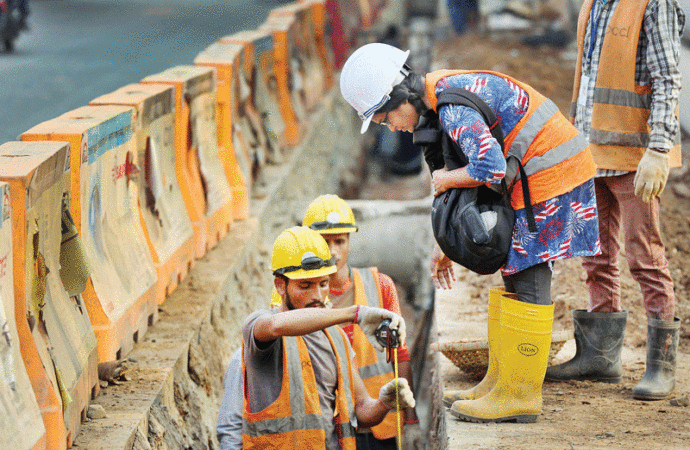Published in Dhaka Tribune on March 21, 2018

Photo: Syed Zakir Hossain
The size of the female labour force in Bangladesh increased at a significantly more rapid rate than that of men from the 2015-16 fiscal year to FY2016-17.
According to a report from the Bangladesh Bureau of Statistics (BBS), the size of female labour force increased by 4.6%, while the male labour force increased by 1%. The total labour force increased by 1.4 million, or 2.3%.
The findings of the report, titled the “Labour Force Survey 2016-17,” were published at a seminar at the BBS auditorium in Dhaka on Tuesday.
The report also said that the unemployment rate remained at a constant 4.2%, with the ratio of unemployed men versus women at almost 50:50.
Planning Minister AHM Mustafa Kamal graced the seminar as the chief guest, while state minister for Finance and Planning MA Mannan spoke as special guest. Statistics and Informatics Division Secretary in-Charge Saurendra Nath Chakrabhartty presided over the seminar.
BBS Director General Md Amir Hossain delivered the welcome address while Logistics Management and Information System (LMIS) Project Director Kabir Uddin Ahmed, also a BBS director, presented the findings of the survey.
State Minister for Finance and Planning MA Mannan said the rapid growth of the female labour force was a sign of women empowerment.
He also said that the quantity of skilled labour needed to be increased if Bangladesh wanted to be seen as a developed country.
He added that the country has now moved more into the industrial sector rather than the agricultural sector.
Meanwhile, Planning Minister AHM Mustafa Kamal said Bangladesh was no longer a poor country, having graduated from LDC status.
“Bangladesh is now like other developing countries of the world such as China, India and Malaysia,” the planning minister added.
He also hoped that Bangladesh could attain a robust GDP growth in excess of 8%, stressing that all needed to put in sincere effort in order to do this.
The report also mentioned that 1.3 million new employment opportunbities were created in the last fiscal year, while 1.4 million people entered into paid employment from unpaid employment.
“As a result, the number of employment opportunities created in the country over the last fiscal year stood at 2.7 million,” the report read.
Furthermore, 1 million employment opportunities were created for Bangladeshi’s abroad, leading to a total 3.7 million new employment opportunities.
The number of contributing unpaid family workers decreased sharply, by 18.6%, in the 2016-17 fiscal year, and the highest proportion in formal employment were highly educated.
Labour under-utilization decreased by 7.5%, with the majority of workers being in the RMG sector.
 CPD RMG Study Stitching a better future for Bangladesh
CPD RMG Study Stitching a better future for Bangladesh






